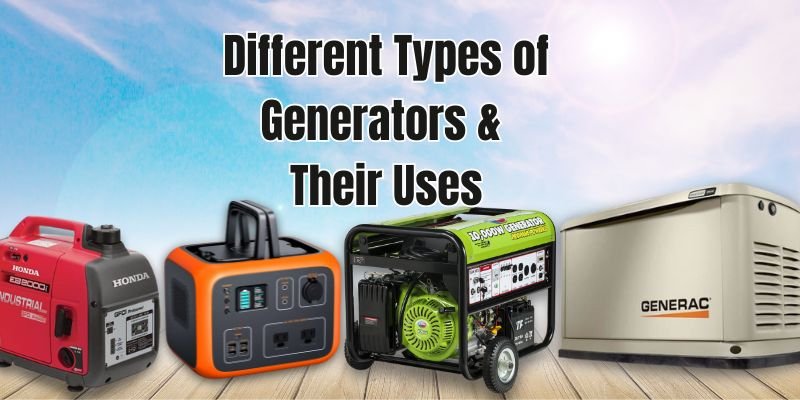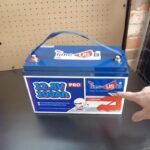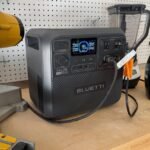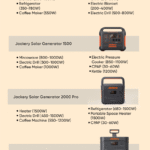Disclosure: This post contains affiliate links and I will be compensated if you make a purchase after clicking through my links. Learn More
A generator trips when connected to a house due to overload, wiring issues, or faulty appliances. Identifying the cause is crucial.
Generators provide essential backup power during outages. They ensure homes remain functional and safe. Sometimes, they trip unexpectedly, causing inconvenience. This can result from overloading the generator with too many appliances. Wiring issues within the house can also cause this problem.
Faulty appliances may draw excessive power, leading to a trip. Regular maintenance of both the generator and home electrical systems is vital. This prevents trips and ensures consistent power supply. Understanding the common causes helps homeowners troubleshoot effectively. Always consult a professional for persistent issues. Proper care extends the lifespan of the generator and maintains home safety.

Common Causes
Generators can trip when connected to a house due to several common causes. Understanding these causes can help prevent interruptions and ensure a reliable power supply.
Overload Issues
An overloaded generator can trip and shut down. This happens when the generator is supplying more power than it can handle. To prevent this, always calculate the total wattage needed and ensure it is within the generator’s capacity. Using energy-efficient appliances can also help reduce the load.
Short Circuits
Short circuits are another frequent cause of generator trips. They occur when electrical wires touch each other or when insulation breaks down. This can result in a dangerous fault. Regularly inspect and maintain wiring to avoid short circuits. Installing circuit breakers can also provide added protection.
Fuel Problems
Fuel issues can cause generators to trip as well. Using old or contaminated fuel can lead to engine problems. Ensure the fuel is fresh and clean. Also, check for proper fuel levels before starting the generator. Regular maintenance of the fuel system can prevent many issues.
| Cause | Prevention |
|---|---|
| Overload | Calculate wattage, use energy-efficient appliances |
| Short Circuits | Inspect wiring, use circuit breakers |
| Fuel Problems | Use fresh fuel, maintain fuel system |
Initial Checks
When a generator trips while connected to your house, you need to perform initial checks. These checks help identify the problem quickly. By following these steps, you can ensure your generator runs smoothly and safely.
Inspect Connections
First, check all the connections. Look at the wires and plugs. Ensure everything is tight and secure. Loose connections can cause problems.
Use a flashlight to see better. Look for any signs of wear or damage. Replace any damaged parts immediately. This can prevent future issues.
Verify Fuel Levels
Next, check the fuel levels. A generator needs fuel to run. Open the fuel tank and look inside. Make sure it has enough fuel to operate.
If the fuel is low, refill it. Use the correct type of fuel for your generator. This information is usually in the user manual. Incorrect fuel can damage the generator.
Check Circuit Breakers
Finally, inspect the circuit breakers. These are often the cause of tripping. Find the main breaker panel in your house. Check if any breakers have tripped.
If a breaker is off, reset it. Push it back to the “on” position. If it trips again, there may be a bigger issue. You may need to call a professional for help.
| Initial Check | Steps |
|---|---|
| Inspect Connections |
|
| Verify Fuel Levels |
|
| Check Circuit Breakers |
|
Electrical Load Management
Managing the electrical load when using a generator for your house is crucial. It ensures that the generator runs smoothly without tripping. This section will guide you through effective electrical load management.
Prioritize Appliances
Begin by prioritizing essential appliances. Make a list of must-have devices like the refrigerator, lights, and heating systems. These are crucial during power outages. Other appliances like TVs or gaming consoles can wait.
This helps in reducing unnecessary load on the generator. Ensure to turn off non-essential devices to prevent overload.
Calculate Total Load
Calculating the total load is important. Add up the wattage of all prioritized appliances. Use the table below for a clear understanding.
| Appliance | Wattage |
|---|---|
| Refrigerator | 700 |
| Lights | 300 |
| Heating System | 1500 |
The total wattage is 2500 watts. Ensure your generator can handle this load.
Use Energy-efficient Devices
Use energy-efficient devices to reduce the load. Look for LED lights, which use less power than traditional bulbs. Choose energy-efficient appliances that consume less wattage.
Energy-efficient devices help in maintaining a stable load. This reduces the chances of generator trips and ensures smooth operation.
Generator Placement
Placing a generator correctly is crucial for safety. It ensures efficient operation. Proper placement avoids potential hazards, protecting your home and family.
Avoid Damp Areas
Generators should be placed in dry locations. Damp areas can damage the generator. Moisture can lead to electrical malfunctions.
Consider these tips:
- Use a sturdy platform.
- Avoid placing generators on wet grass.
- Cover the generator during rain.
Read Here: How to clean a generator
Ensure Proper Ventilation
Generators produce exhaust gases. Proper ventilation is essential. It prevents the buildup of dangerous fumes.
Follow these guidelines:
- Place the generator in an open area.
- Avoid enclosed spaces.
- Use a fan to disperse fumes if necessary.
Safe Distance From House
Generators should be kept at a safe distance from the house. This reduces the risk of carbon monoxide poisoning.
Maintain these distances:
| Distance | Reason |
|---|---|
| At least 20 feet | Minimizes carbon monoxide exposure |
| Keep away from windows | Prevents fumes from entering the home |
Always follow manufacturer guidelines. Safety should be your top priority.
Fuel System Maintenance
Maintaining your generator’s fuel system is crucial for its efficient operation. Regular checks ensure your generator runs smoothly and prevents unexpected trips. Here, we will discuss three key aspects of fuel system maintenance: checking fuel lines, inspecting the fuel filter, and using fresh fuel.
Check Fuel Lines
Inspect fuel lines for any signs of wear or damage. Cracks or leaks can cause fuel to spill, leading to potential hazards. Ensure all connections are tight and secure. Replace damaged lines immediately to avoid interruptions.
Inspect Fuel Filter
The fuel filter prevents debris from entering the engine. A clogged filter can cause engine problems and reduce efficiency. Regularly inspect the fuel filter for dirt or blockages. Change the filter as recommended by the manufacturer.
Use Fresh Fuel
Always use fresh fuel in your generator. Old fuel can degrade and cause starting issues. Store fuel in a clean, sealed container. Follow the manufacturer’s guidelines for fuel storage and usage.
| Maintenance Task | Frequency |
|---|---|
| Check Fuel Lines | Monthly |
| Inspect Fuel Filter | Every 3 Months |
| Use Fresh Fuel | As Needed |
Battery And Starter Issues
Generator trips can be frustrating. Often, the problem lies with the battery and starter. These components are crucial for the generator’s operation. Let’s explore how to troubleshoot and fix these issues.
Check Battery Charge
The battery must be fully charged. A weak battery won’t start the generator. Use a voltmeter to measure the battery’s charge. It should read between 12.4 and 12.7 volts. If the reading is lower, the battery needs charging.
| Battery Condition | Voltage |
|---|---|
| Fully Charged | 12.4 – 12.7 volts |
| Needs Charging | Below 12.4 volts |
Inspect Starter Motor
The starter motor ignites the generator. If the starter motor fails, the generator won’t start. Listen for a clicking sound when you turn the key. A clicking sound often means a starter motor problem.
- Check for loose connections.
- Ensure all wires are intact.
- Replace damaged wires or connectors.
Test Ignition System
The ignition system includes the spark plugs and ignition coils. Faulty spark plugs can prevent the generator from starting. Remove the spark plugs and inspect them. They should be clean and free of deposits.
- Remove spark plugs using a wrench.
- Inspect for damage or deposits.
- Replace if necessary.
Testing the ignition coils is also essential. Use an ohmmeter to check for continuity. Replace any faulty ignition coils to ensure proper operation.
Professional Help
Connecting a generator to your house can be tricky. Seeking professional help ensures safety and efficiency. Avoid mishaps and ensure everything runs smoothly by consulting experts. Below are key areas where professional assistance is crucial.
When To Call An Electrician
An electrician should be called for several reasons:
- Installation of transfer switches
- Checking electrical panel compatibility
- Resolving any wiring issues
Electricians ensure that all connections are safe and compliant with codes. They can also identify potential problems before they become serious issues.
Generator Servicing
Regular servicing extends the life of your generator. Here are some important tasks:
- Oil changes
- Filter replacements
- Battery checks
These tasks keep your generator running efficiently. A professional technician can perform these services and check for other potential issues.
Read Here: How Often Does a Generac Generator Need to Be Serviced
Warranty And Repairs
Generators often come with a warranty. Professional repairs help maintain this warranty. Here are some benefits:
| Benefit | Description |
|---|---|
| Expertise | Professionals have the right skills and knowledge. |
| Genuine Parts | Use of authentic parts ensures longevity. |
| Safety | Professionals follow safety guidelines. |
Repairs by professionals keep your generator in top shape. It also ensures that your warranty remains valid.

Preventive Measures
Ensuring your generator runs smoothly when connected to your house is crucial. Preventive measures can save you from unexpected failures and costly repairs. Let’s dive into some essential steps.
Regular Maintenance
Regular maintenance keeps your generator in top shape. Schedule maintenance checks every six months. This includes changing the oil and inspecting filters.
- Oil Change: Replace the oil every 100 hours of use.
- Filter Inspection: Check air and fuel filters monthly.
- Battery Check: Ensure the battery is charged and terminals are clean.
Load Testing
Load testing helps verify the generator’s capacity. It ensures the generator can handle the house load.
| Load Type | Frequency | Duration |
|---|---|---|
| Light Load | Monthly | 30 minutes |
| Full Load | Quarterly | 1 hour |
Safety Checks
Safety checks protect you and your home. Ensure all connections are secure and stable.
- Inspect Cables: Check for frayed or damaged wires.
- Check Fuel: Ensure the fuel system is leak-free.
- Test Alarms: Verify that carbon monoxide alarms are functional.
Perform these checks monthly to ensure safety.

Frequently Asked Questions
Why Does My Generator Trip?
A generator may trip due to overload, wiring issues, or faulty appliances connected to it.
How To Prevent Generator Tripping?
Ensure proper load management, regular maintenance, and check wiring connections to prevent generator tripping.
Can A Faulty Appliance Cause Generator Tripping?
Yes, a faulty appliance can cause the generator to trip due to electrical overload or short circuits.
What Should I Do If My Generator Trips?
Immediately disconnect all appliances, reset the generator, and reconnect devices one by one to identify the issue.
Final Words
Understanding why your generator trips when connected to your house is crucial. Regular maintenance and proper setup can prevent issues. Addressing potential problems early ensures a reliable power supply. Keep these tips in mind to safeguard your home’s electricity needs.
Stay prepared, and enjoy uninterrupted power during outages.








